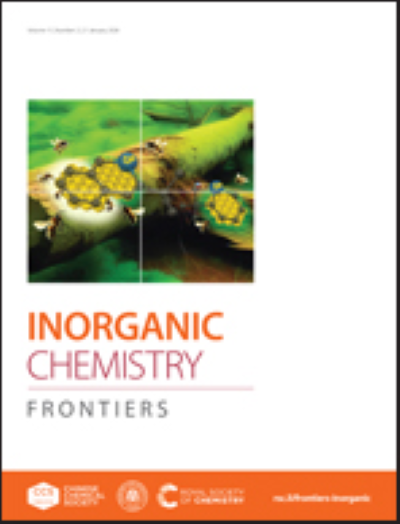非诱变的Ru(II)-膦基复合物诱导线粒体介导的乳腺癌细胞凋亡:从2D到3D的研究
IF 6.1
1区 化学
Q1 CHEMISTRY, INORGANIC & NUCLEAR
引用次数: 0
摘要
制备了三种钌(II)膦基配合物,其通式为[Ru(N-S)(dppm)2]PF6 (Ru1-Ru3)作为抗癌剂[N-S为2-巯基-2-噻唑啉(Hmtz),巯基-1-甲基咪唑(Hmmi)和4,6-二氨基-2-巯基嘧啶(Hdmp), dppm为1,1 ' -二(二苯基膦)甲烷]。对这些化合物的系数分布进行了评估,Log P值表明它们对有机相的偏好。在确定其溶液稳定性后,研究了其对不同乳腺细胞系的体外细胞毒性。我们的研究结果显示,考虑到MCF-7细胞,Ru2的细胞毒性比顺铂对照组高50倍,选择性几乎高2倍。此外,Ru2还能诱导该细胞系的形态改变并抑制集落的形成。考虑到三维细胞培养模型在筛选新的抗癌候选药物方面的优势,我们研究了Ru2在多细胞肿瘤球体上的作用,发现Ru2是最佳的候选化合物。活/死实验显示,在IC50浓度下,2d和3D MCF-7细胞模型中均有死亡细胞。钌-膦络合物能够影响细胞周期分布和线粒体膜电位,诱导凋亡细胞死亡。Ames和微核试验表明Ru2无致突变性。据我们所知,这项工作通过基于2D和3D细胞的实验证明了钌-磷化氢复合物对MCF-7乳腺癌细胞的作用,突出了其作为有前途的抗肿瘤药物的潜力。本文章由计算机程序翻译,如有差异,请以英文原文为准。
Non-mutagenic Ru(II)-phosphine-based Complexes Induce Mitochondria-mediated Apoptosis in Breast Cancer Cells: From 2D to 3D Investigations
Three Ruthenium(II)-phosphine based complexes with the general formula [Ru(N–S)(dppm)2]PF6 (Ru1–Ru3) were prepared and studied as anticancer agents [N–S are 2-mercapto-2-thiazoline (Hmtz), mercapto-1-methylimidazole (Hmmi) and 4,6-diamino-2-mercapto-pyrimidine (Hdmp) and dppm is the 1,1`-bis(diphenylphosphino)methane]. The coefficient distribution of these compounds was assessed, and Log P values indicated their preference for the organic phase. After confirming their stability in solution, their in vitro cytotoxicity was investigated on different breast cell lines. Our findings revealed Ru2 as 50-fold more cytotoxic and almost 2-fold more selective than cisplatin control, considering the MCF-7 cells. Also, Ru2 induces morphological changes and inhibits the colony formation in this cell line. Considering the advantages of 3D cell culture models for screening of new anticancer drug candidates, the effect of Ru2, which was found to be the best candidate compound, was investigated on multicellular tumor spheroids. Live/dead assay revealed dead cell population in both 2D-and 3D MCF-7 cell models upon treatment at IC50 concentration. The Ruthenium-phosphine complex was able to affect the cell cycle distribution and the mitochondrial membrane potential, inducing apoptosis cell death. Ames and Micronucleus tests indicated the absence of mutagenicity for Ru2. To the best of our knowledge, this work demonstrated the effects of a ruthenium-phosphine complex on MCF-7 breast cancer cells using 2D and 3D cell based experiments, highlighting its potential as promising antitumor agent.
求助全文
通过发布文献求助,成功后即可免费获取论文全文。
去求助
来源期刊

Inorganic Chemistry Frontiers
CHEMISTRY, INORGANIC & NUCLEAR-
CiteScore
10.40
自引率
7.10%
发文量
587
审稿时长
1.2 months
期刊介绍:
The international, high quality journal for interdisciplinary research between inorganic chemistry and related subjects
 求助内容:
求助内容: 应助结果提醒方式:
应助结果提醒方式:


